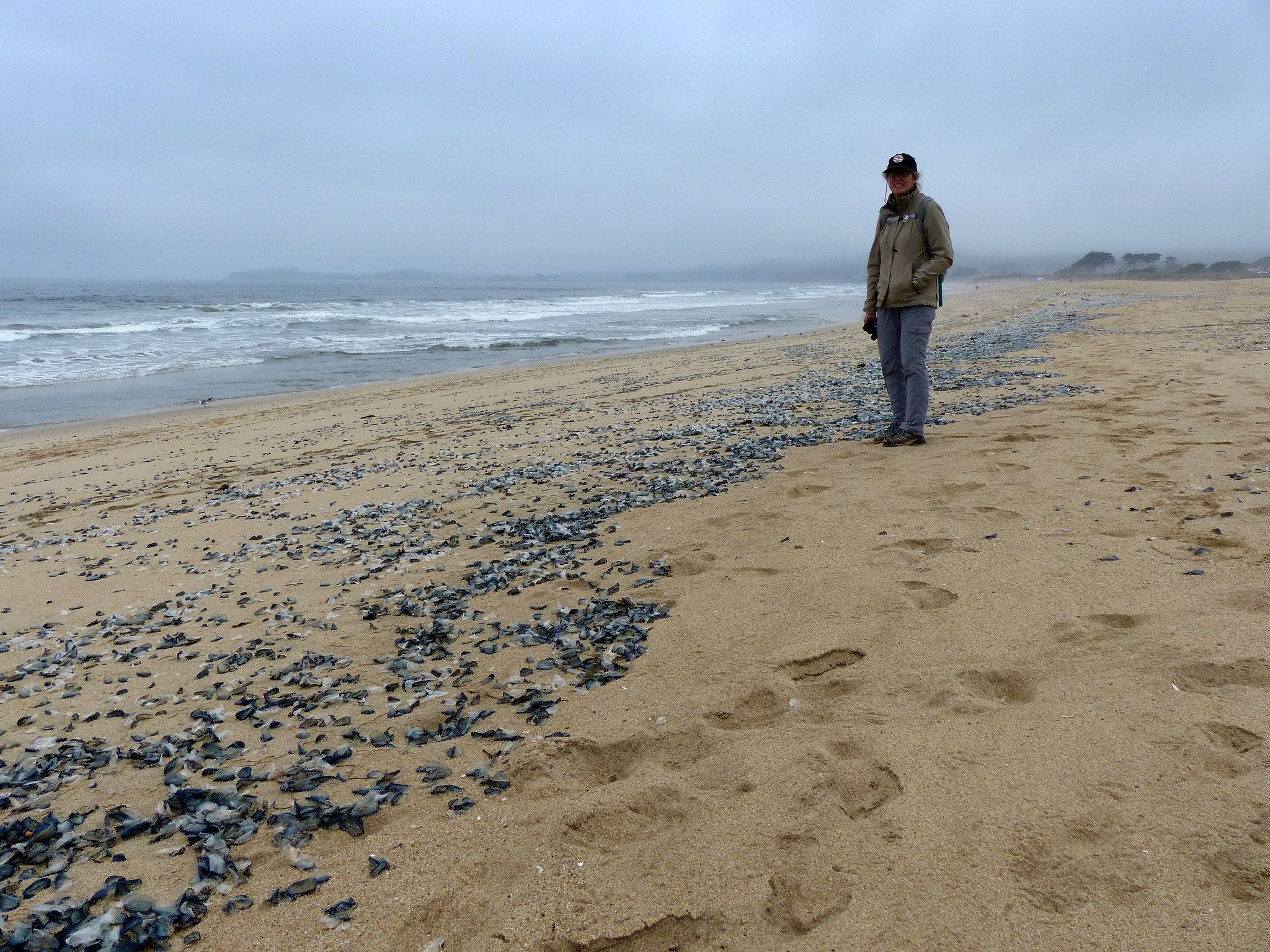
If you were to walk along Fitzroy Beach on the West Coast of New Zealand today, you'd have to slosh through tens of thousands of jellyfish carcasses.
The New Zealand Herald reported yesterday that the beach was covered in dead members of the species Velella velella. These blue, gelatinous creatures, also known as "by-the-wind sailors," are related to jellyfish, corals and sea anemones. They get their name from the sail on their back that they use to catch wind to carry them across the surface of the ocean. Their tentacles dangle into the ocean, collecting their prey of plankton.

"They're quite often seen washed up on West Coast [New Zealand] beaches, and when there's one, there's usually dozens, but I've never seen them drifted up this much (in their thousands) in one place before," Don Neale, a marine biologist at New Zealand's Department of Conservation, told the Herald.
The hydrozoan graveyard was a bizarre sight to behold, but it is not the first time that these animals and their relatives have turned up on beaches. According to a study published in Marine Biodiversity Records, the first officially documented mass stranding of velella in New Zealand was in October and November of 2006 and included the death of "several million" of them. They also wash up regularly on beaches on the west coast of North America, from British Columbia to California. Their bizarre-looking relative, the Portuguese man o'war, is also subject to mass strandings.
"When winds change, they end up getting washed up on shore because of the sails on their back," Kelly Sutherland, an assistant professor of biology at the University of Oregon, told Newsweek in a voicemail. Because they don't have any other means of propelling themselves, velella are subject to the whims of the wind.
While these strandings can be surprising, they are generally uncommon on the coasts near their habitat. Strandings can include anywhere between a few, several dozen, thousands, or even millions of individuals. In April, thousands of by-the-wind-sailors were also stranded in Oregon. This occurs fairly regularly. In December 2015, Storm Desmond washed up thousands on a British Coast.
While velella look similar to jellyfish, they are not the same animal and are in fact more closely related to sea anemones. They are also harmless to humans, unlike the Portuguese man o'wars.
As with all strandings, the dead animals will attract scavengers, which, as nature's cleanup crew, will consume the soft-bodied animals. Until then, it may be wise to stay away from the odorous beach of the dead.
Uncommon Knowledge
Newsweek is committed to challenging conventional wisdom and finding connections in the search for common ground.
Newsweek is committed to challenging conventional wisdom and finding connections in the search for common ground.
About the writer
Kristin is a science journalist in New York who has lived in DC, Boston, LA, and the SF Bay Area. ... Read more
To read how Newsweek uses AI as a newsroom tool, Click here.








